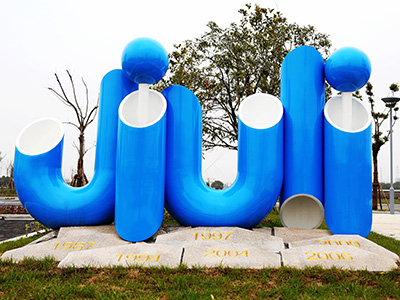There are only three grades of chromium-manganese austenitic stainless steels with manganese and nitro-nickel (AISI 200 series) in the American AISI standard, namely AISI 201,202 and 205, but there are more grades listed in ASTM and UNS, as shown in Table 1. For nickel saving, the grades of AISI 201 and 202 to replace chromium-nickel austenitic stainless steels are AISI 301 and 302.
The United States incorporated AISI 201 and 202 into the AISI standard in 1955, and then it was accepted by some countries successively. China in 1975 into the national standard (GB 1220), the grades are 1CR17Mn6Ni5N (equivalent to AISI 201) and 1CR18Mn8Ni5N (equivalent to AISI 202); SUS 201 and SUS 202 were included in Japan in 1972. Russia (Soviet) in 1972 into the Г OCT standard only 12 x17 Г 9 ah4 (AISI 202) a brand; In the UK, only the equivalent of AISI 202 has been included in the BS standard, 284 S16. SUS 201 and SUS 202 have also been removed from the latest Japanese standard for stainless steel plates published in 1998. The new standard of stainless steel plate and strip (GB/T 3280-2007 and GB/T 9327-2007) issued in 2007 did not include the corresponding grades of AISI201 and 202.
Comparing the mechanical properties of AISI 201 and AISI 202 with those of AISI 301 and AISI 302, it can be seen that the yield strength of AISI 201 and AISI 202 is more than 30% higher than that of AISI 301 and AISI 302. Although this makes up for the low strength of Cr-Ni austenitic stainless steel in the solid solution state to some extent, the improvement of strength also brings many difficulties and inconveniences to the processing and use of Cr-Ni austenitic stainless steel according to the 301, 302 and 304 performance. This may be one of the important reasons why the original hope of standard 200 series steel to replace the corresponding chromium-nickel austenitic stainless steel has not been realized.
The intergranular corrosion resistance of AISI 201 and AISI 202 was compared with that of 304. It can be seen that AISI 201, AISI 202 and AISI 304 of solid solution state are not sensitive to intergranular corrosion, while sensitized state is sensitive to intergranular corrosion. However, the corrosion resistance of AISI304 steel in nitric acid method is better than that of AISI 201 and AISI 202, but the corrosion resistance of AISI 201 and AISI 202 is much lower than that of AISI304. This is also an important reason for the limited application of AISI 201 and AISI 202.
In addition to AISI 201 and AISI 301, AISI 202 and AISI 304 stainless steel corrosion resistance comparison. It can be seen that, because the test conditions are the medium at room temperature, so the corrosion resistance between them are shown to show a difference. However, under the salt spray test, the corrosion area of modified 201 is as high as 40%~60%, while 304 has no corrosion. The application of AISI 200 series steels in wet environments containing Cl-, including some atmospheric and aqueous media, is also limited due to the adverse effect of manganese on pawing resistance in stainless steels described above.
Cold work hardening behavior in AISI 201, 202 and AISI 301, 302. It can be seen that the cold hardening behavior of AISI 201 and 202 is similar to that of AIS 301 and 302.
Adaptability of 200 series steel and three 18-8 types of Cr-Ni austenitic stainless steels to various cold forming properties. It can be seen that although there is no significant difference in their adaptability to cold formability, the delayed fracture sensitivity of the actual cold field type 304 is lower than that of 201 and 202. 304 is more suitable for cold forming.
At present, 201, 202 are mainly used in high strength, magnetic and other applications. (From Introduction to Stainless Steel)


















